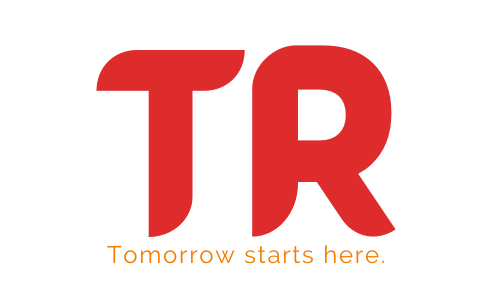Get Started with CherryPy: A Beginner’s Guide
Table of Contents
- Introduction
- Benefits of using the CherryPy Framework
- Advantages and Disadvantages of CherryPy
- Steps to Setup CherryPy Framework
- Conclusion

Introduction
CherryPy is an open-source, object-oriented web framework written in Python. It is designed to be fast, simple, and lightweight. It is used to create web applications in a minimal amount of time. CherryPy uses a multi-layered architecture, which allows developers to create web applications quickly and easily.
CherryPy is based on a web server written in Python, and it uses the Python language to define web applications. It is well-suited for developing dynamic web applications, and it is well-documented. CherryPy is based on the Model-View-Controller (MVC) architecture, which helps to keep the code organized and easy to maintain.
CherryPy is designed to be flexible and extensible, allowing developers to easily customize their applications. It is also designed to be portable, and can run on most operating systems. It supports a wide range of web servers, including Apache, IIS, and Lighttpd.
The CherryPy framework is designed to reduce the amount of code that is needed to create web applications. It does this by providing a set of tools and libraries that can be used to quickly build web applications. It also provides a server-side scripting language that can be used to quickly create web pages.
CherryPy is also designed to be easy to use. It provides a set of tools and libraries that make it easy to create web applications without having to learn a lot of programming. This makes it an ideal choice for new developers, as well as experienced developers who want to quickly develop web applications.
CherryPy also provides a set of tools and libraries that make it easy to create RESTful web services. This makes it an ideal choice for creating web services that need to be accessible from multiple platforms.
Benefits of using the CherryPy Framework
In this section, we’ll look at the benefits of using CherryPy and how it can help you develop better web applications.
- Easy to Learn: CherryPy is an intuitive, easy-to-learn framework. It’s designed to be user-friendly and requires minimal programming experience. It has a straightforward API and is well-documented, making it accessible to beginners.
- Powerful: CherryPy is a powerful framework with all the features you need to develop a robust web application. It has built-in support for templating, data validation, sessions, and more. It also includes a powerful routing system, allowing you to easily create custom URLs.
- Highly Scalable: CherryPy is designed to be highly scalable and can easily handle large amounts of traffic. It’s also easy to deploy, making it ideal for small businesses and startups.
- Secure: The framework is built with security in mind. CherryPy includes built-in security features such as CSRF protection and secure cookies.
- Flexible: CherryPy is a flexible framework, allowing you to write your application in any language you want. This makes it easy to integrate with other frameworks and technologies.
Advantages and Disadvantages of CherryPy
Advantages of CherryPy Framework
- Easy to Use: CherryPy is an easy to use Python web framework that allows developers to quickly create web applications with minimal effort. It has a powerful API and comes with a wide range of features that make it easy to create and maintain web applications.
- Highly Scalable: CherryPy is highly scalable and can handle very large amounts of traffic. It is optimized for high-performance applications and can be used to create applications that can scale to millions of users.
- Supports Multiple Languages: CherryPy supports multiple languages including Python, Ruby, Java and C#. This makes it easy to develop web applications in any language that you are comfortable with.
- Open Source: CherryPy is an open source project and the code is available for free. This makes it easy for developers to modify the code and customize it to meet their needs.
- Security: CherryPy is very secure and provides a high level of security. It is capable of handling all types of requests, including those from malicious users.
Disadvantages of CherryPy Framework
- Limited Documentation: The documentation for CherryPy is not as detailed as some of the other python web frameworks. This can be a problem for developers who are not familiar with the framework and need more guidance.
- Limited Plugins: CherryPy does not have as many plugins and extensions as some of the other python web frameworks. This can be an issue for developers who want to add more features and functionalities to their applications.
- Limited Support: CherryPy does not have as much support as some of the other python web frameworks. This can be a problem for developers who need help with the framework or have questions about how to use it.
Steps to Setup CherryPy Framework
- Install CherryPy: The first step is to install the CherryPy library on your computer. This can be done with the pip command or by downloading the source code and running it with Python.
- Create an Application: Once the library has been installed, you can create an application by creating a new folder and writing the code for your application in it.
- Configure the Server: Once the application has been created, you need to configure the server by writing a configuration file. This file will contain the settings that the server needs to run the application.
- Start the Server: Once the configuration file has been written, you can start the server by running the server.py command. This will start the web server and it will be ready to accept requests from users.
- Create Routes: The next step is to create routes in the application. This is done by creating a special file called routes.py which contains all the routes that the server needs to accept requests from users.
- Create Templates: The next step is to create templates for the web pages that the application will serve. This is done by creating a special folder called templates and writing HTML code for each page.
- Test the Application: Once all the steps have been completed, you can test the application by running it on a web browser. This will allow you to see if the application is working as expected and if any changes need to be made.
- Deploy the Application: Once the application has been tested and is working correctly, it can be deployed on a web server. This will allow users to access the application from anywhere in the world.
Conclusion
In conclusion, CherryPy is a great choice for developing web applications. It is designed to make developing web applications in Python easier and faster. It also provides a wide range of features that make it easy to develop web applications. Additionally, it supports a wide range of web protocols, databases, and frameworks, making it easy to integrate web applications with other systems. Finally, CherryPy provides a wide range of tools and libraries that make it easy to develop web applications quickly and easily.

